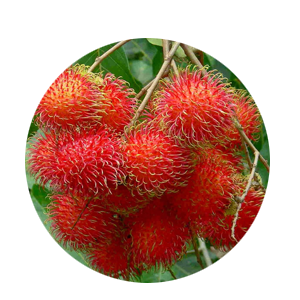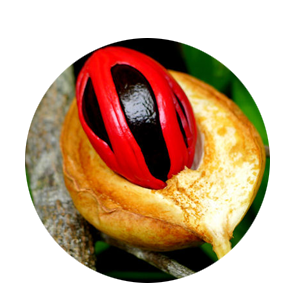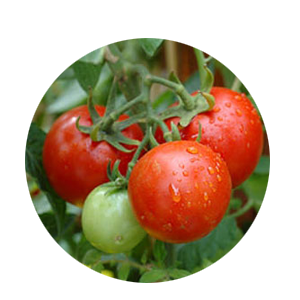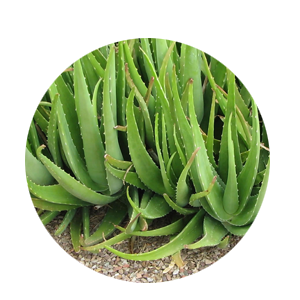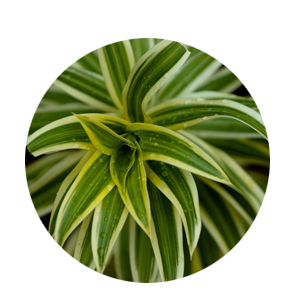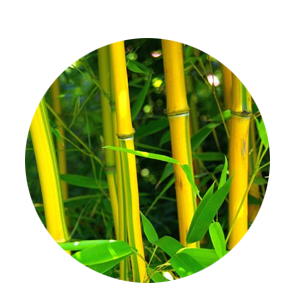Orange - Nagpur - Grafted - (8x10 bag)

Item Description
GENERAL INFORMATION ABOUT AN ORANGE TREE Orange is a citrus fruit that belongs to the family Rutaceae. There are over 600 varieties of orange trees that can be found in tropical and subtropical parts of the world. Oranges originate from Southeast Asia. The orange tree is an evergreen, flowering tree, with an average height of 9 to 10m (30 to 33 ft), although some very old specimens can reach 15 m (49 ft). Its oval leaves, alternately arranged, are 4 to 10 cm (1.6 to 3.9 in) long and have crenulate margins. The grainy irregular rind of the ripe fruit can range from bright orange to yellow-orange, but frequently retains green patches or, under warm climate conditions, remains entirely green. Like all other citrus fruits, the sweet orange is non-climacteric. ABOUT NAGPUR ORANGE Nagpur orange is a variety of orange grown in Nagpur, Maharashtra, India. It is rustic and pockmarked exterior which is sweet and has juicy pulp. It gives the city of Nagpur its pseudonym Orange City. The Geographical Indication was applied for Nagpur Orange with the registrar of GIs in India, and is effective as of April 2014.The Nagpur oranges blossom during the Monsoon season and are ready to be harvested from the month of December. The orange crop here grows twice a year. The fruit available from September to December. HEALTH BENEFITS OF ORANGE Oranges are highly beneficial for your body. A medium, 2 1/2-inch orange offers lots of vitamins, minerals and fiber, all for a measly 60 calories. While orange juice is also full of nutrients, you\\\\\\\'ll miss out on fiber, so it is better to consume the whole fruit. Oranges are easy to tote around, since the thick skin protects them from bruising. Toss one in your bag for a quick mid-morning snack, add orange wedges to a grilled chicken salad or find other ways to add more oranges to your diet. Sweet and juicy to taste, orange is one of the most popular fruits in India as well as the world. Belonging to a group of citrus fruits called hesperedium, oranges have more health benefits than one. Here are the top 10 health benefits of the fruit. 1. Boosts your immunity 2. Good for your skin 3. Great for your eyes 4. Prevents heart disease 5. Helps in brain development 6. Prevents cancer 7. Keeps you free from stomach ulcers 8. Protects your vision 9. Great for diabetics 10. Prevents hair loss
Maintanance, Disease Management And Yielding
MAINTANACE OF THE PLANTATION Once a plantation has been established, the work should not be considered finished. It will be necessary, for example, to protect the plantation against weather, fire, insects and fungi, and animals. A variety of cultural treatments also may be required to meet the purpose of the plantation. FERTILIZING Fertilization of growing orange trees depends on the use of the fruit. Extra nitrogen fertilizer results in more oil in the peel. Potassium fertilizer decreases oil in the peel. For high productivity of edible oranges, 1 to 2 pounds of nitrogen should be applied yearly to each tree. Fertilizer should include potassium and phosphorus as well as a range of micro-nutrients. If your older orange tree does not produce fruit in abundance, take a soil test of the area where growing orange trees reside to determine what fertilizer ratio is needed. Additional fertilization is often applied by spraying the leaves of the tree once or twice a year. WATERING AND WEED CONTROL Young orange trees should be watered regularly until fully established. In dry western climates, water mature trees deeply at least every one or two weeks. Desert gardeners may have to water more frequently. Mulch the soil around the trees to conserve moisture. Weeding is also very important. Remove all weeds 1.5 meter around the plant. PRUNING AND SHAPE OF TREE Pruning the orange tree for shape is not necessary. However, you should remove any branches that are a foot or less from the ground. In addition, remove damaged or dying branches once they are noticed. PRUNING AND SHAPE OF TREE Pruning the orange tree should not leave the canopy wide open. Removing too many limbs can cause excessive stress to the tree, causing dieback or complete tree death. The tree must have enough limbs for leaves and photosynthesis energy generation to create larger fruit. A canopy that allows light in evenly through the limbs is the best crown shape for bigger fruit. PEST & DISEASE ORANGE TREES Every fruit tree has the future potential for disease and insect damage. Factors such as location and weather will play a part in which issues your tree encounters. If available, disease-resistant trees are the best option for easy care; and for all trees, proper maintenance (such as watering, fertilizing, pruning, spraying, weeding, and fall cleanup) can help keep most insects and diseases at bay. HARVESTING YOUR ORANGE Fruits are harvested when they attain full size, develop attractive color with optimum sugar and acid blend. Fruits should be harvested preferably with clipper, shears or secateurs. Mandarins should not be harvested in wet weather or during rains
- Propogation Method : Grafting
- Plant Climate : Sub Tropical, Cool, Tropical
- Plant Height : 2-3 feet
- Plant Weight : 3.5kg
- Plant Polybagsize : 8x10
Related Images
- Botanical Name : Citrus Sinensis
- Malayalam Name : Orange
- English Name : Orange
This tangy fruit definitely impresses with its delicious juicy taste
Planting Instructions
BASIC PARAMETERS TO PLANT AN ORANGE TREE 1. Soil:-Orange trees prefer a soil that is well drained and somewhat sandy. Though full sand is not preferred, oranges can live, and perhaps even thrive, in soils where there seems to be very little organic material. Even so, trees may require fertilizer. You should plant the orange tree in full sun if possible, though some can withstand partial shade. The soil should be mildly acidic, though oranges can also grow in neutral soil. 2. Planting Distance : For Commercial Plantation :- Mandarins are usually planted in pits of 60 cm. X 60 cm. X 60 cm. size in a square system with a spacing of 4.5-6 m. , accommodating 350-450 plants/ha For Home Garden: -In a home garden generally we are planting one or two an orange trees along with other species of fruit plants. So it is better to keep minimum 3 meter distance from other plants to plant an orange tree. 3. Pit size : Minimum 60cm width X 60cm Breadth X 60cm depth 4. Sunlight : 100% sunlight is best but can grow up to 50 % shade 5. Watering: During dry weather, initially water the plant once in two days and after one month of planting water every 7 to 10 days during the first year. TEN TIPS FOR PLANTING ORANGE TREE 1. Dig a hole/pit 3 to 4 times wider than the container (Normally 60cm X 60cm X 60cm is recommended). Fill the pit with top fertile soil to allow for proper root growth. Avoid clay type soil to refill the pit. 2. Add 250 gm Rock Phosphate or Born Meal and 3 to 5 kg Cow dung or compost in the top soil of the pit and mix it thoroughly (Thorough mixing of manure with soil is very important because direct contact of manure with the roots of the plant will cause the damage of roots and plant). 3. Make a small hole in the pit and carefully remove the plant from the container/pot or poly bag keeping the soil around the roots intact. Don‘t yank the plant out of the pot or poly bag as this can separate the roots from the tree. Poly bags can be easily removed by cutting it by a knife and pots can be removed easily by hitting slightly at the top edge of the pot. 4. Set the plant in the middle of the hole. Avoid planting the tree too deep. Keep the base of the trunk is slightly above ground level. Using some soil, secure the tree in a straight position, then fill and firmly pack the hole with the original soil, making sure there aren‘t any air pockets. 5. If the plant is Grafted or Budded make sure the grafted or budded portion of the plant is above the soil. Do not allow to touch the grafted or budded portion in the soil as it burns the skin of the plant. 6. Create a water-holding basin around the pit and give the plant a good watering. After the water has soaked in, spread protective mulch 2–4 inches deep in a 3-foot diameter area around the base of the tree, but not touching the trunk. Also provide a stich as a support for the plant, if needed. 7. The soil and mulch around your plant should be kept moist but not soggy. During dry weather, initially water the plant once in two days and after one month of planting water every 7 to 10 days during the first year. 8. Remove any tags and labels from the tree as these will affect the tree as it grows. You may need to prune any broken or dead branches. For Budded or Grafted plants it is very important that do not allow the growth of off shoots under the grafted/budded portion. Allow the growth of budded/grafted scions only. 9. Do not use chemical fertilizer or any other chemicals on your newly planted trees. Such products will kill your young trees. If needed you can add chemical fertilizers in small quantity (generally below 100gm) after two to three months of planting with sufficient irrigation. 10. Do not over water or allow rain water so much that you see standing water in the pit area of the plant. It will damage the plants roots and results the die of your plant. MAINTANACE OF THE PLANTATION Once a plantation has been established, the work should not be considered finished. It will be necessary, for example, to protect the plantation against weather, fire, insects and fungi, and animals. A variety of cultural treatments also may be required to meet the purpose of the plantation.









